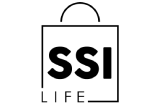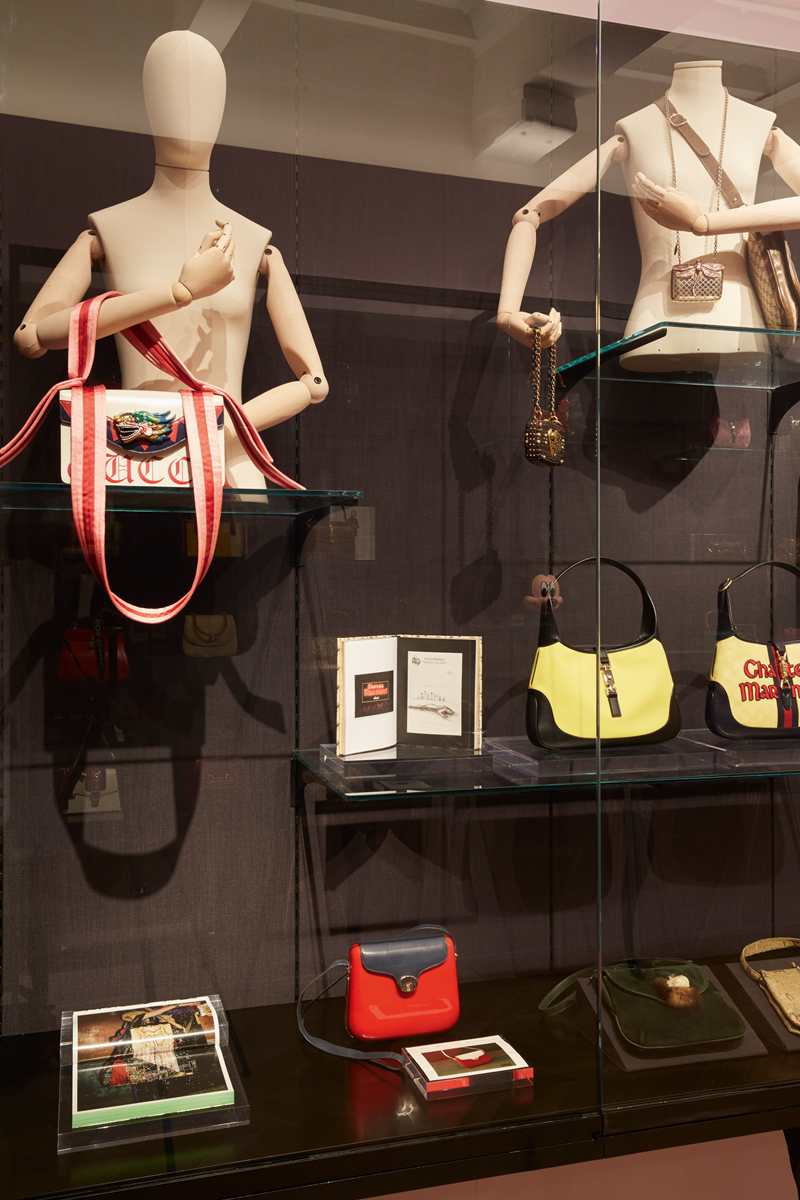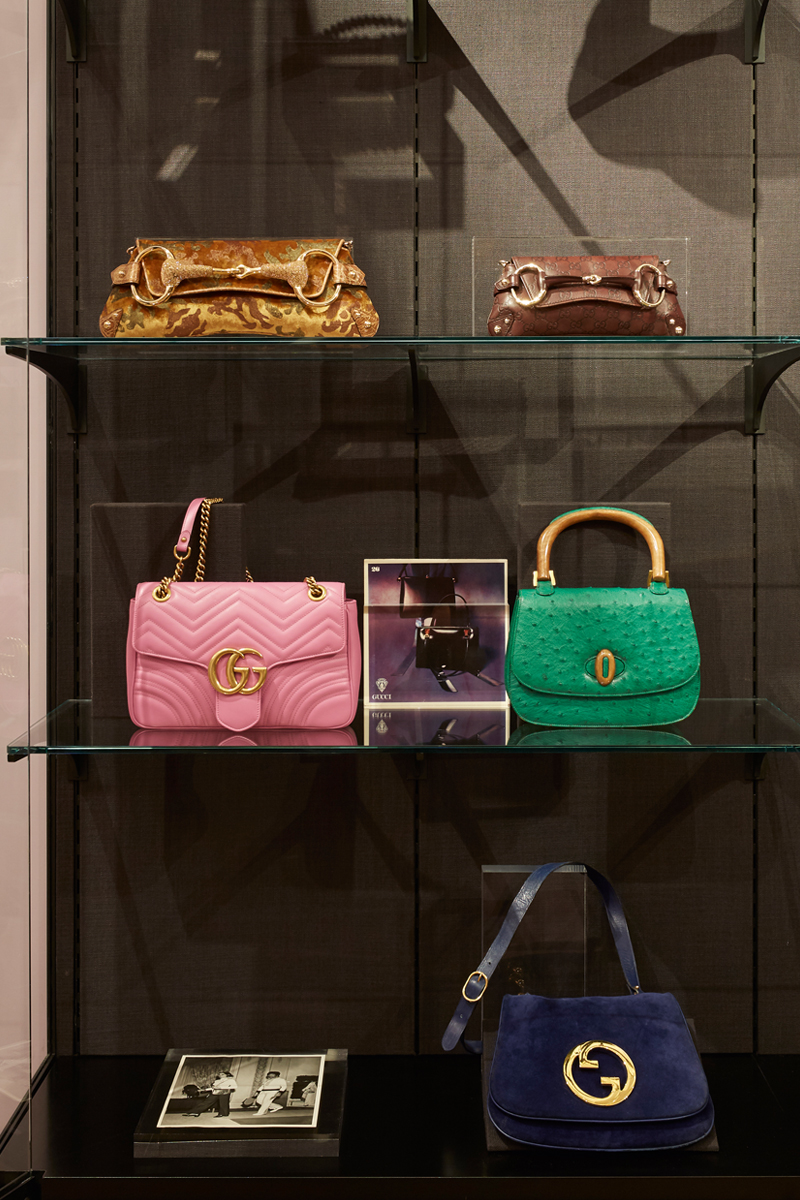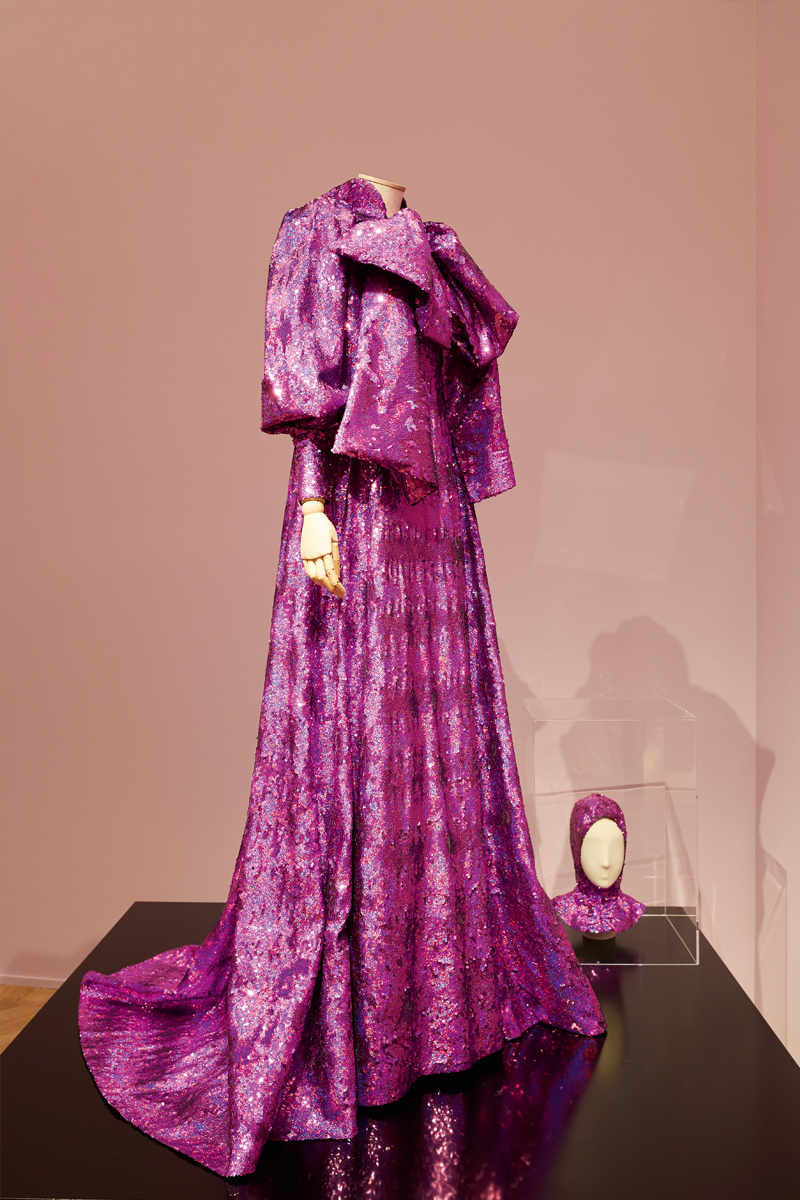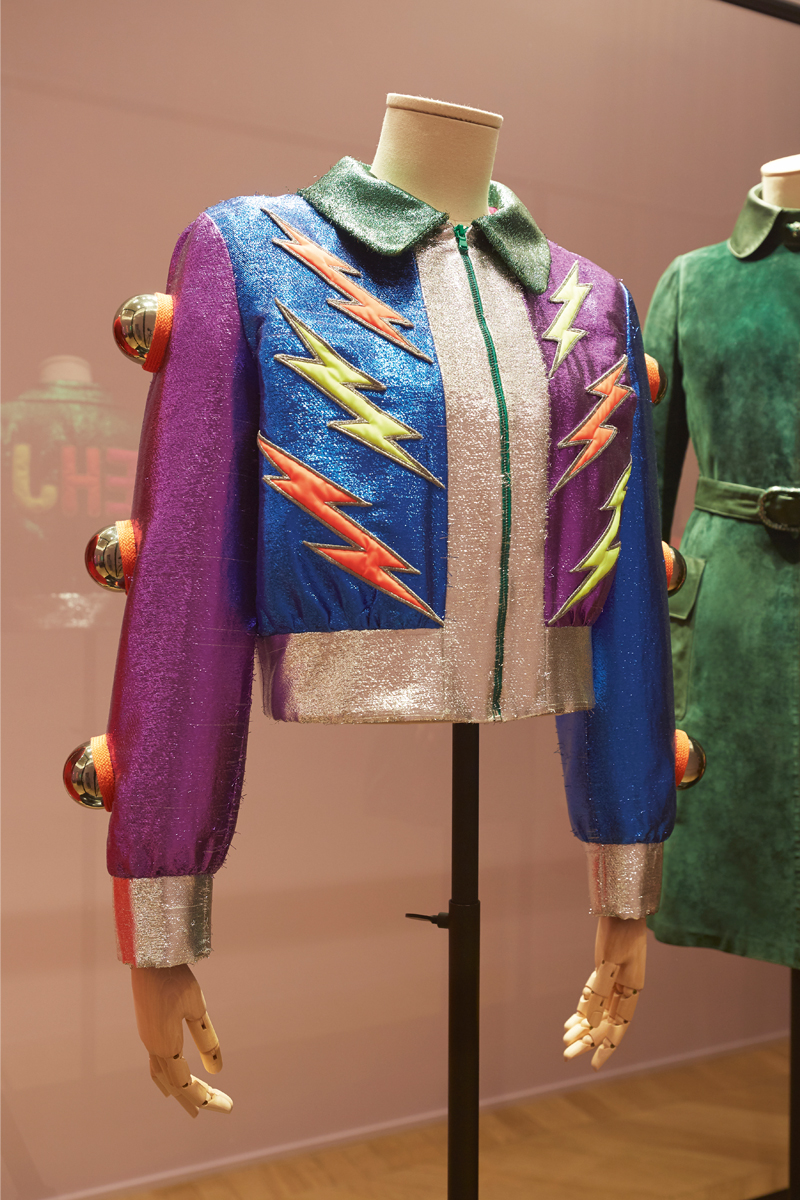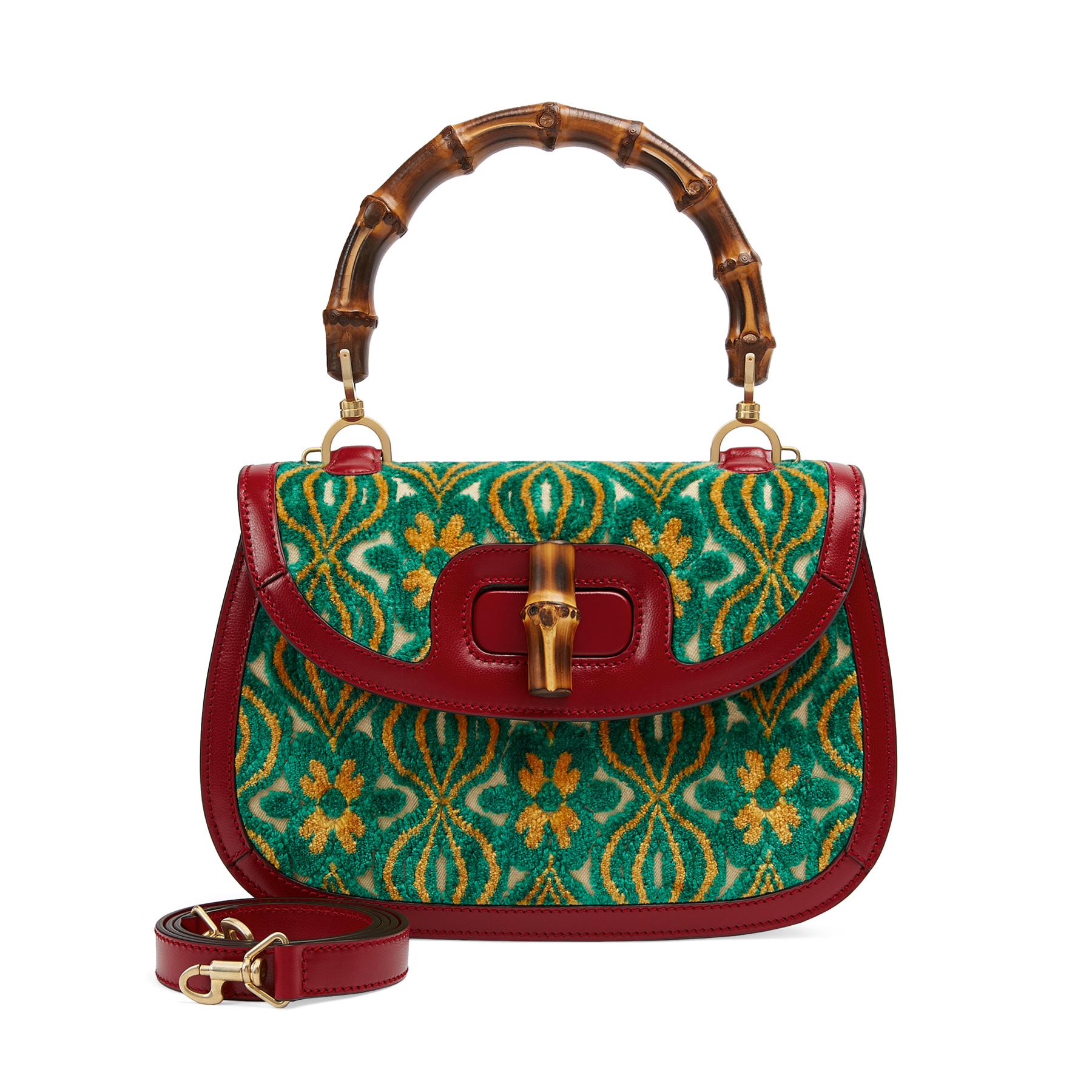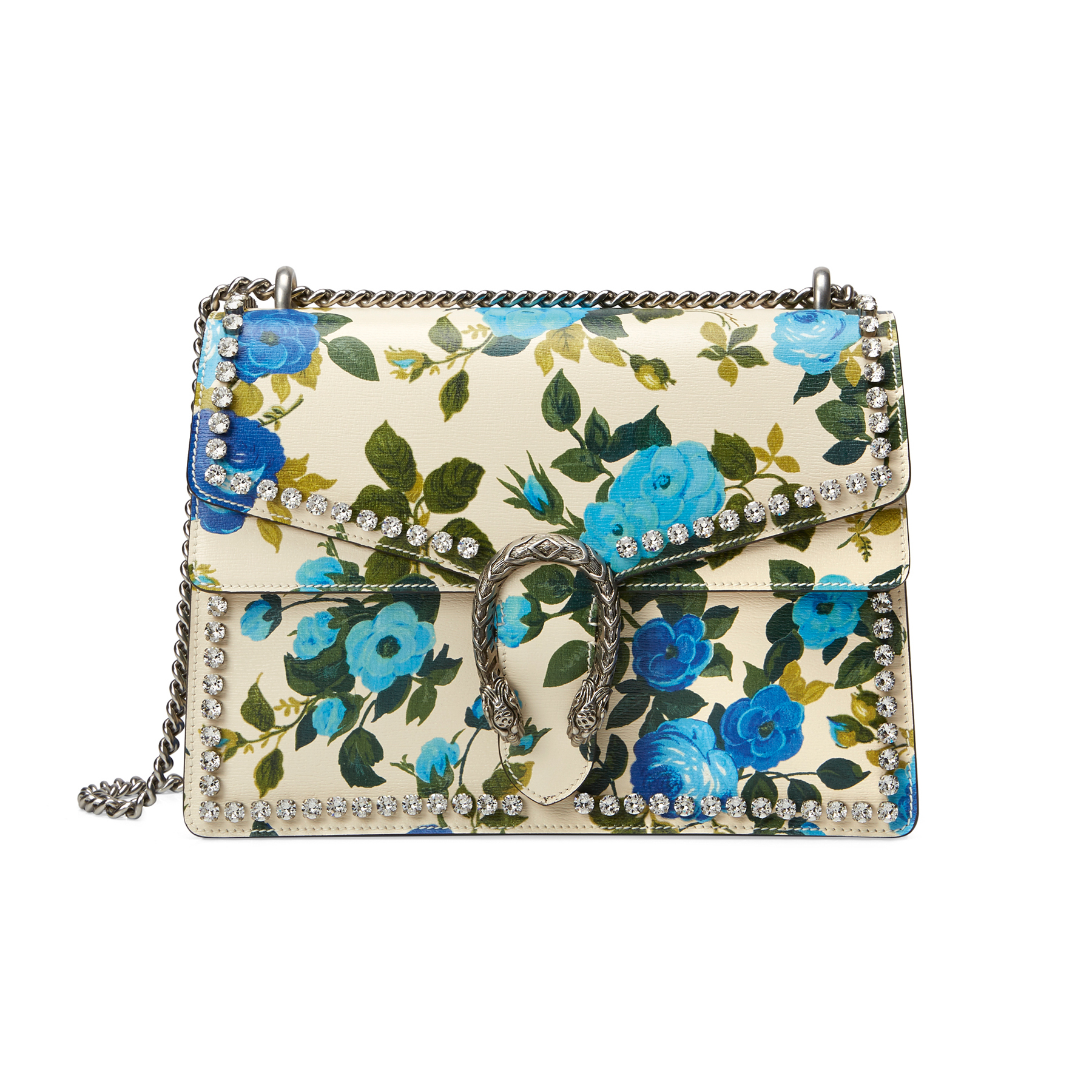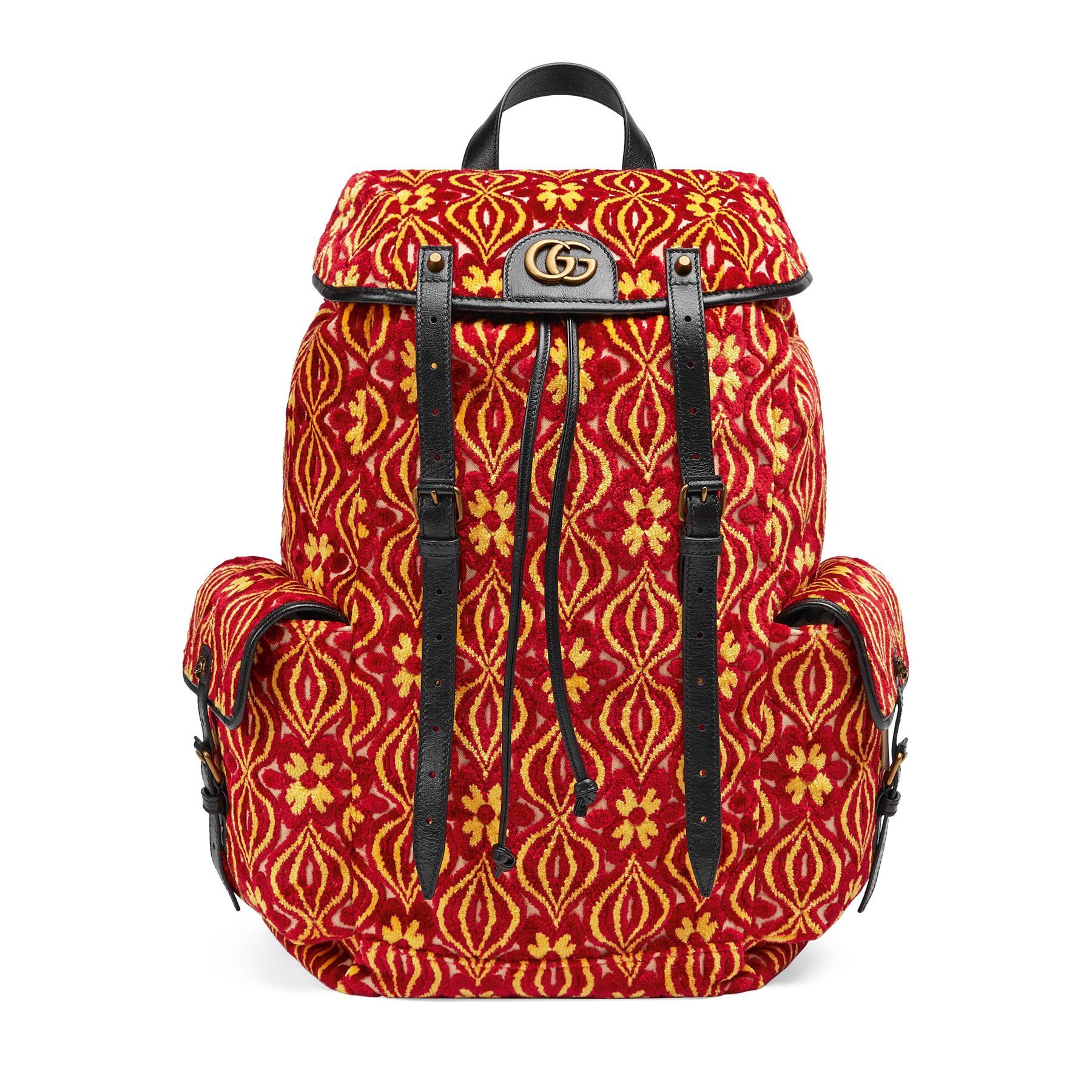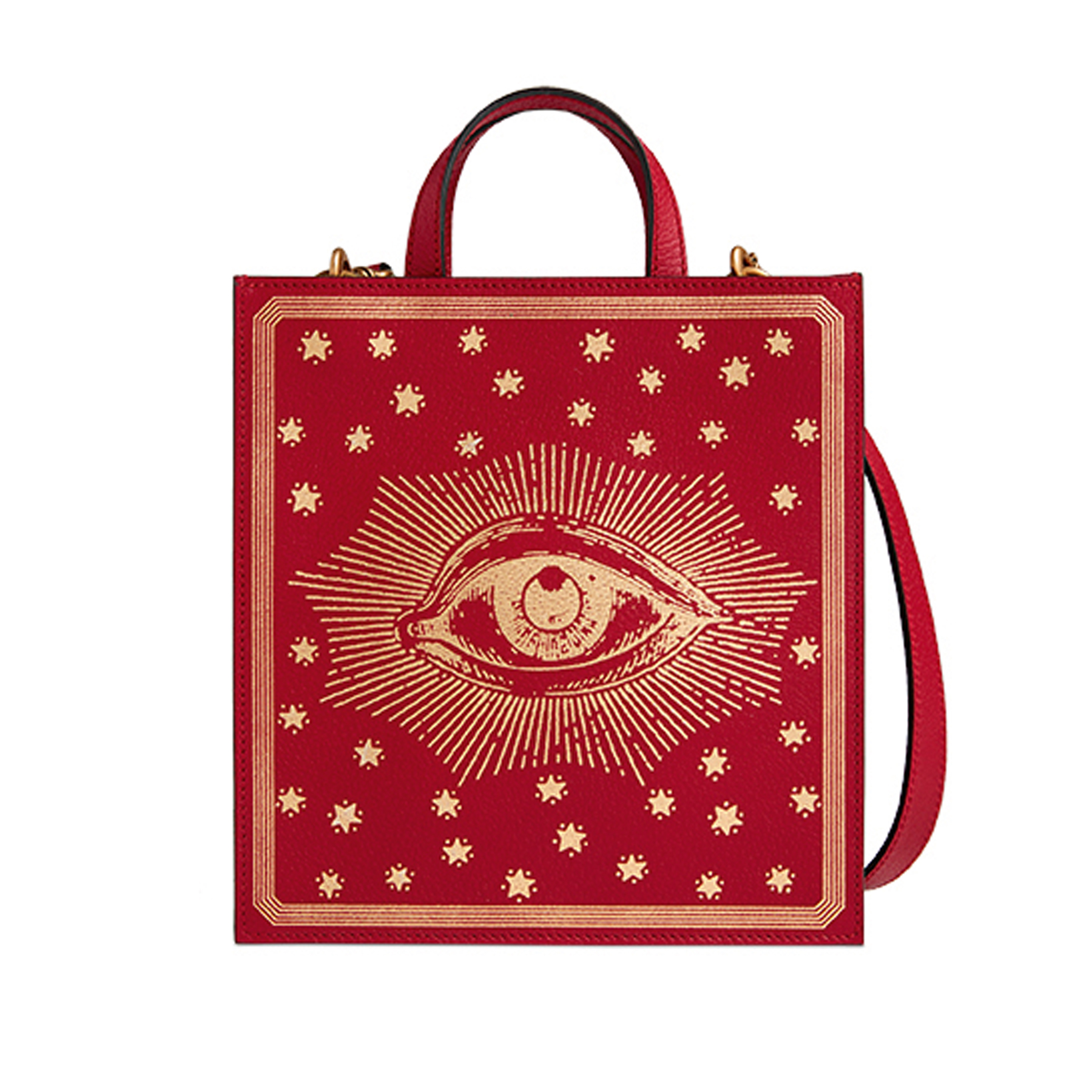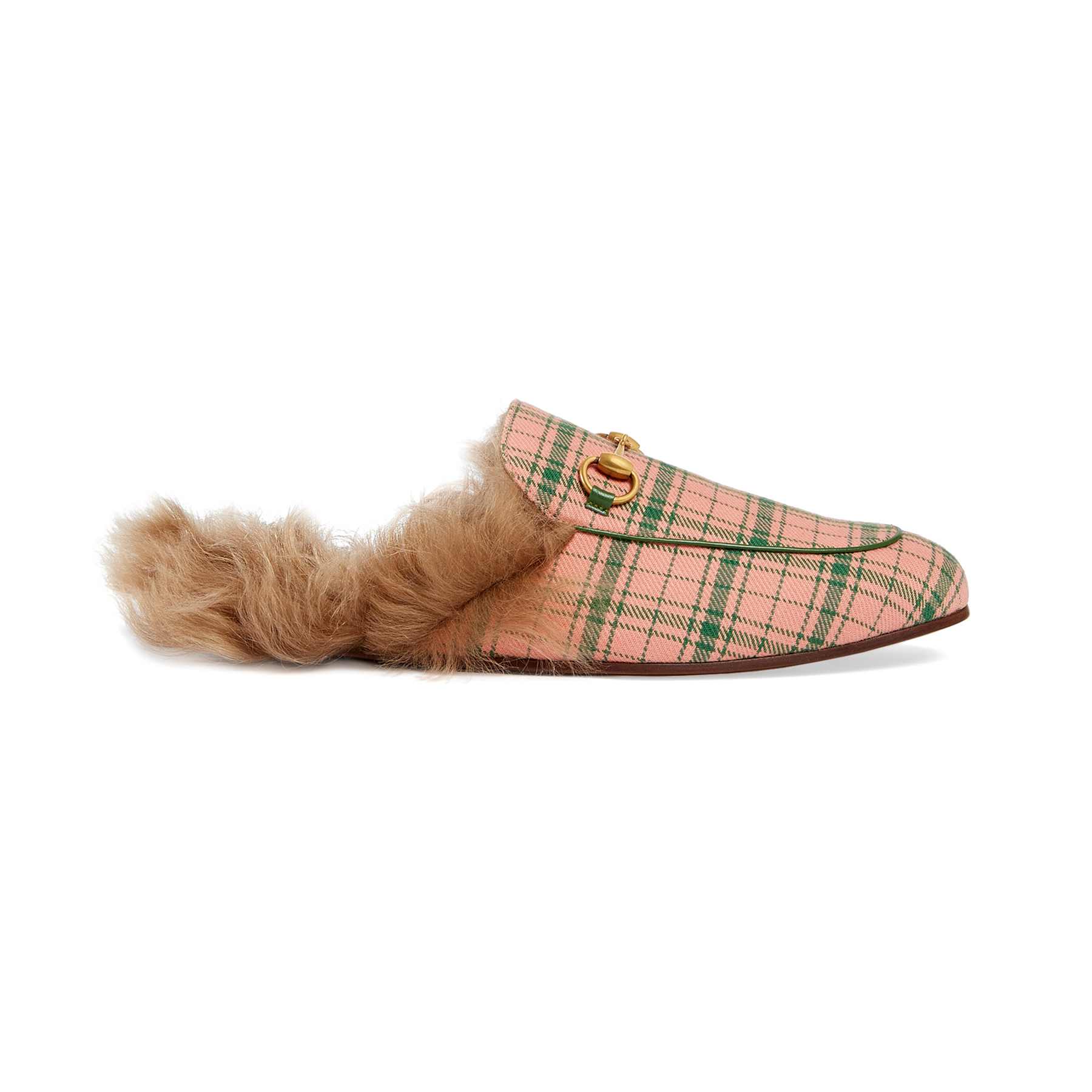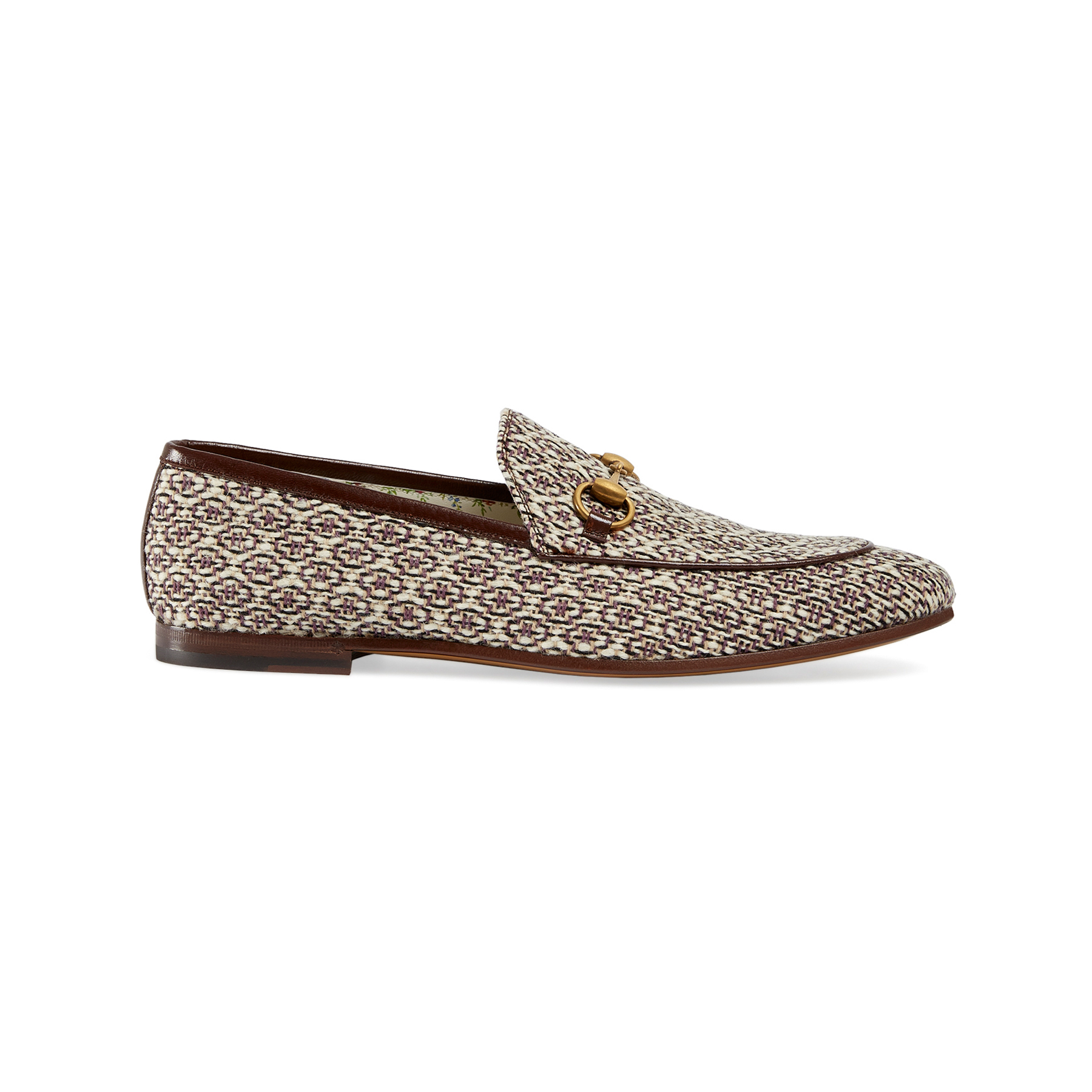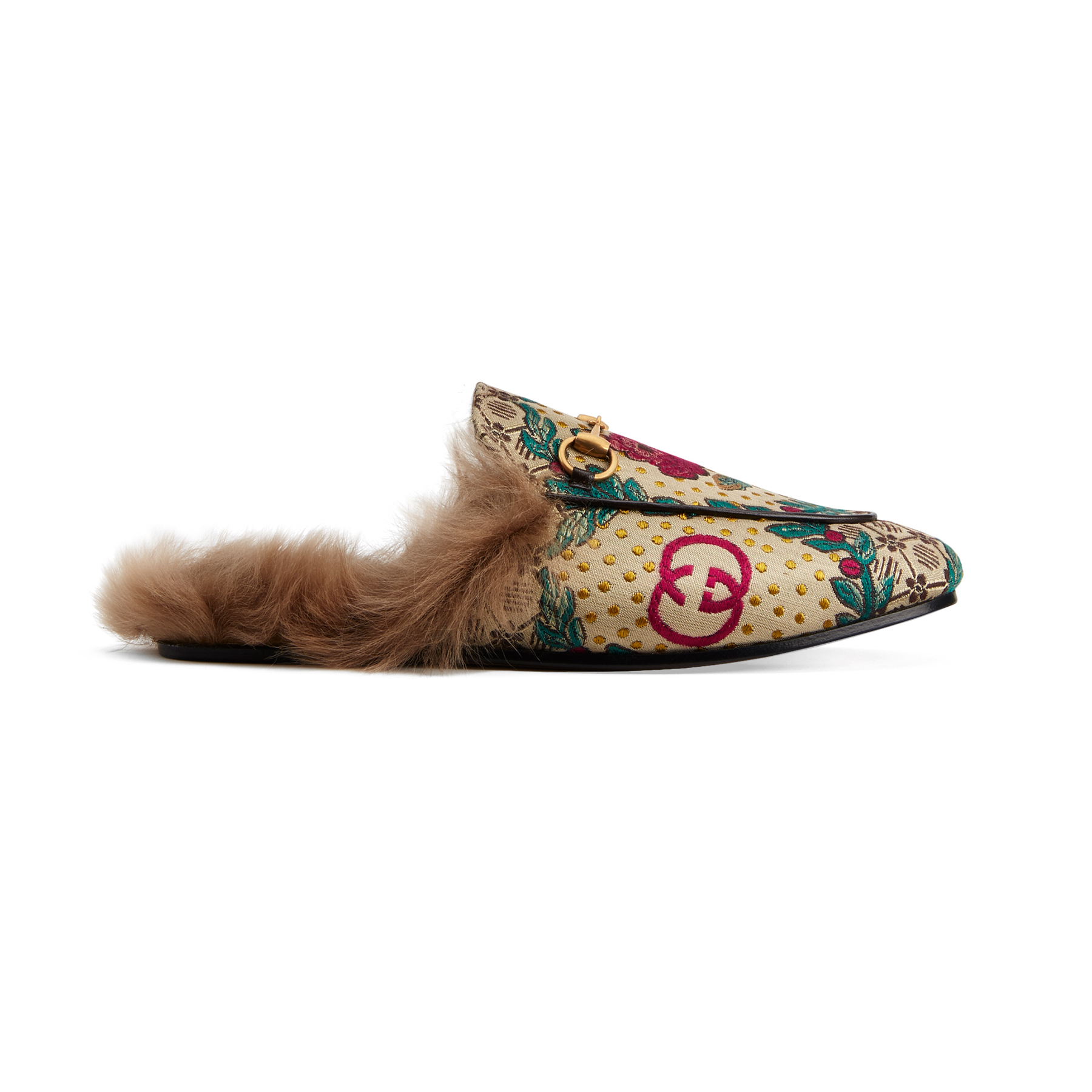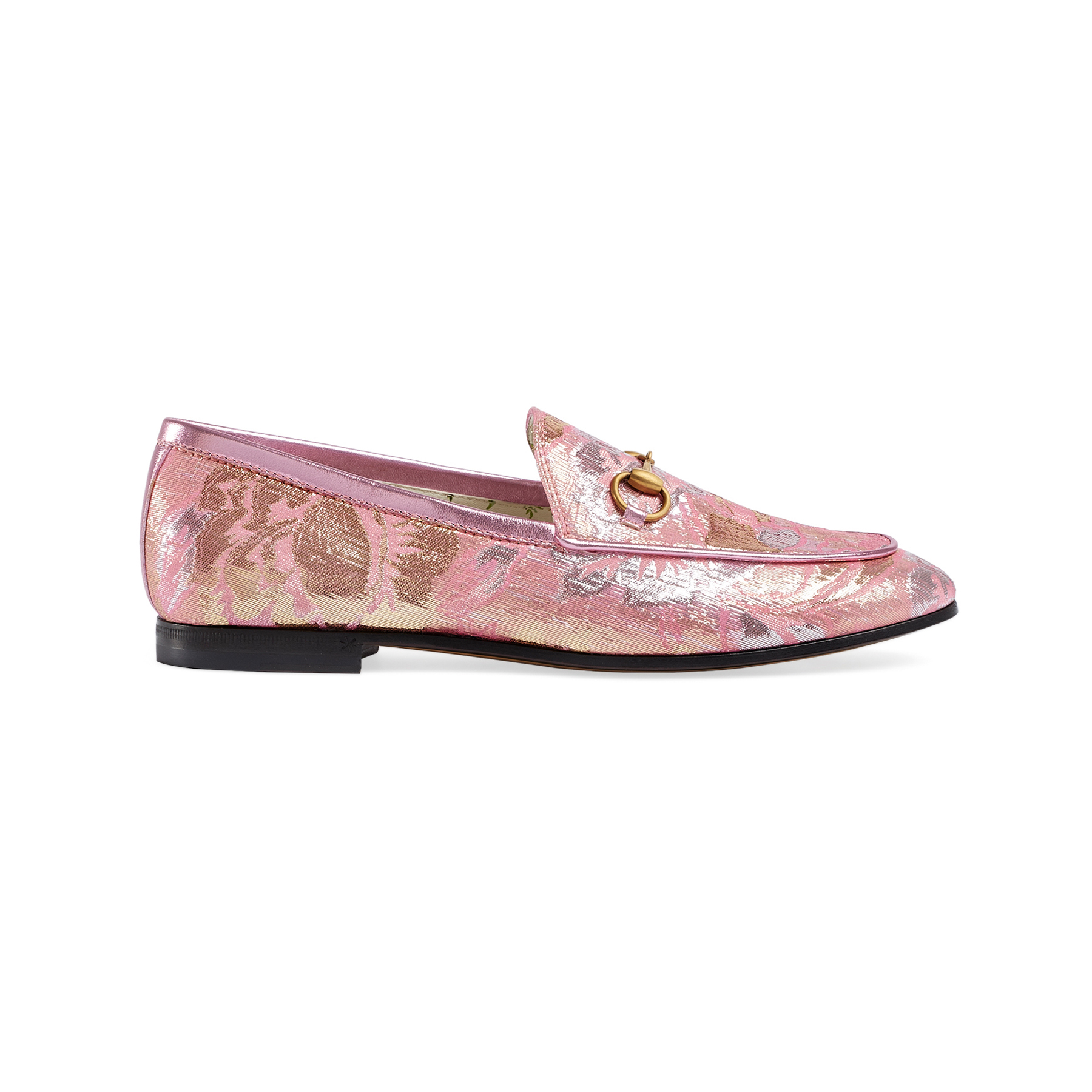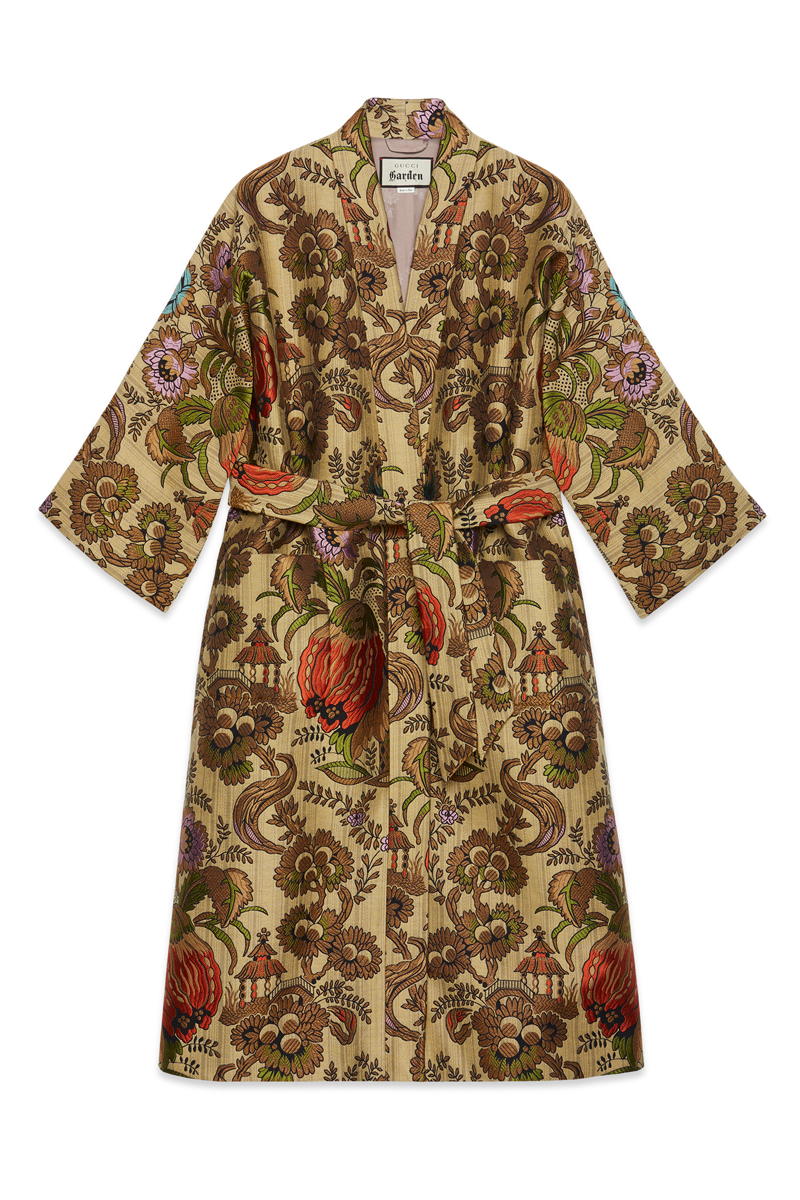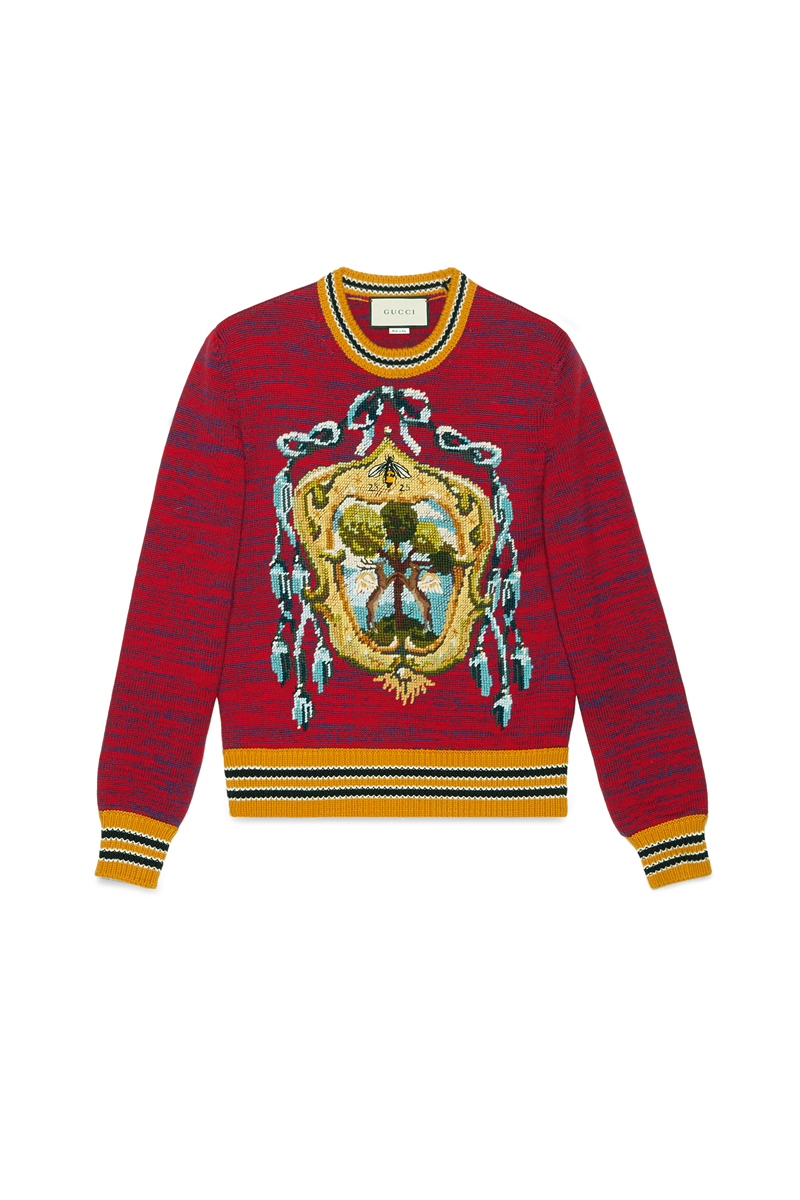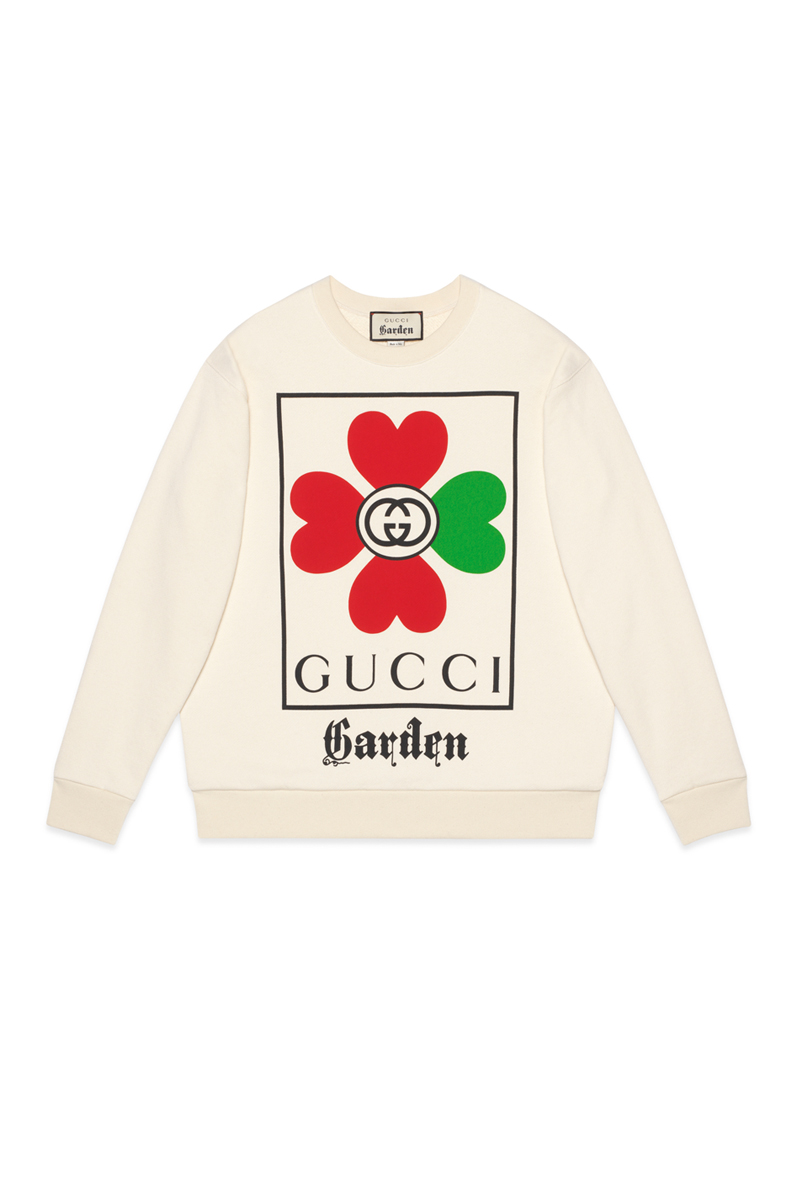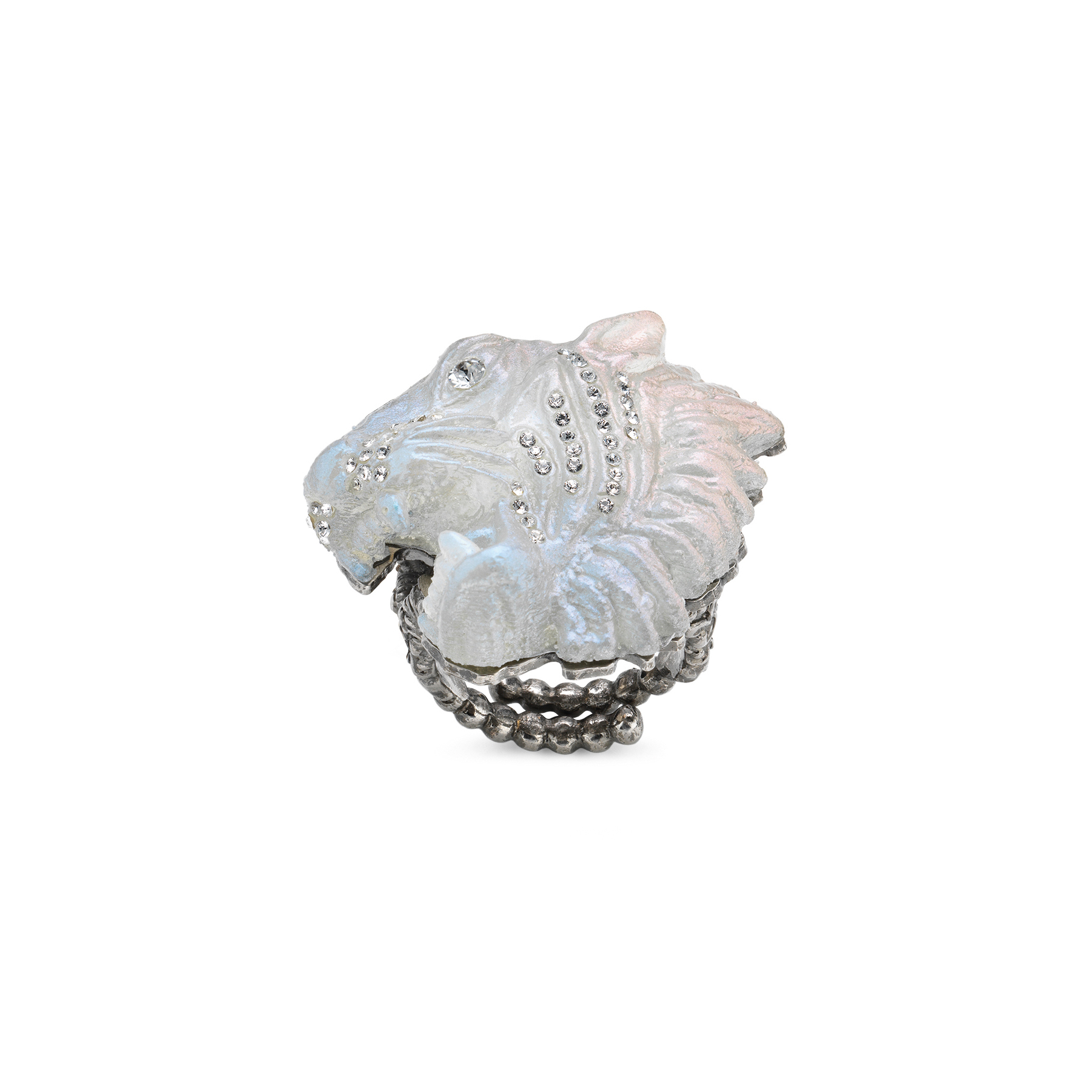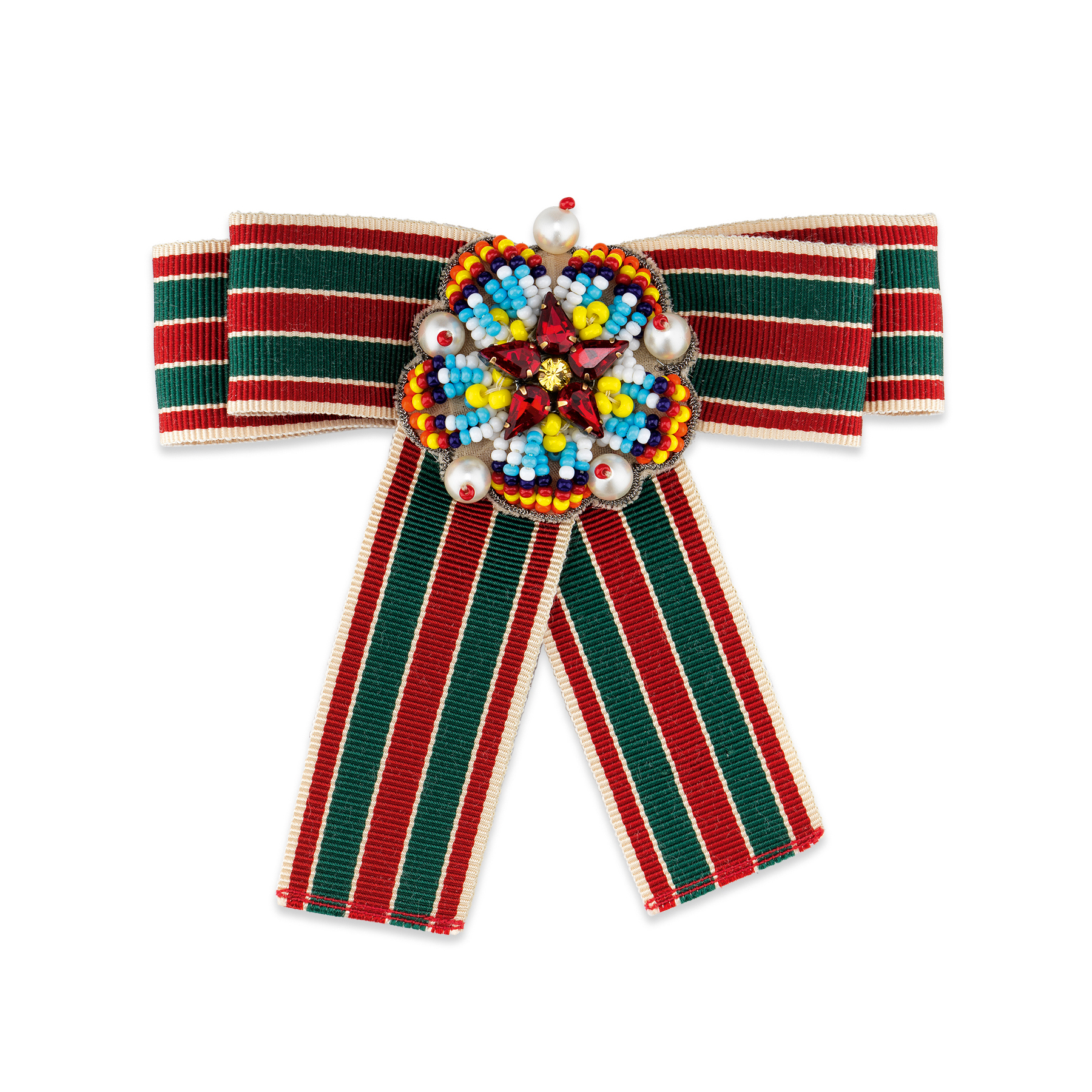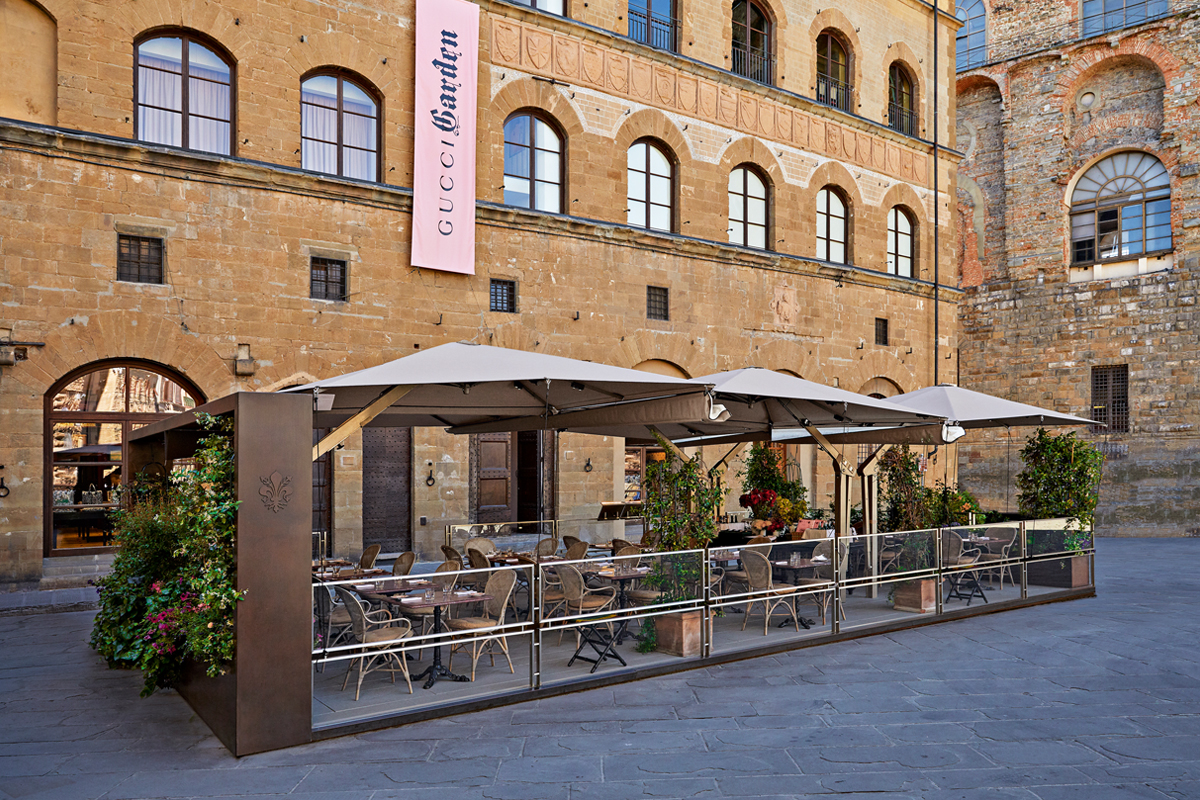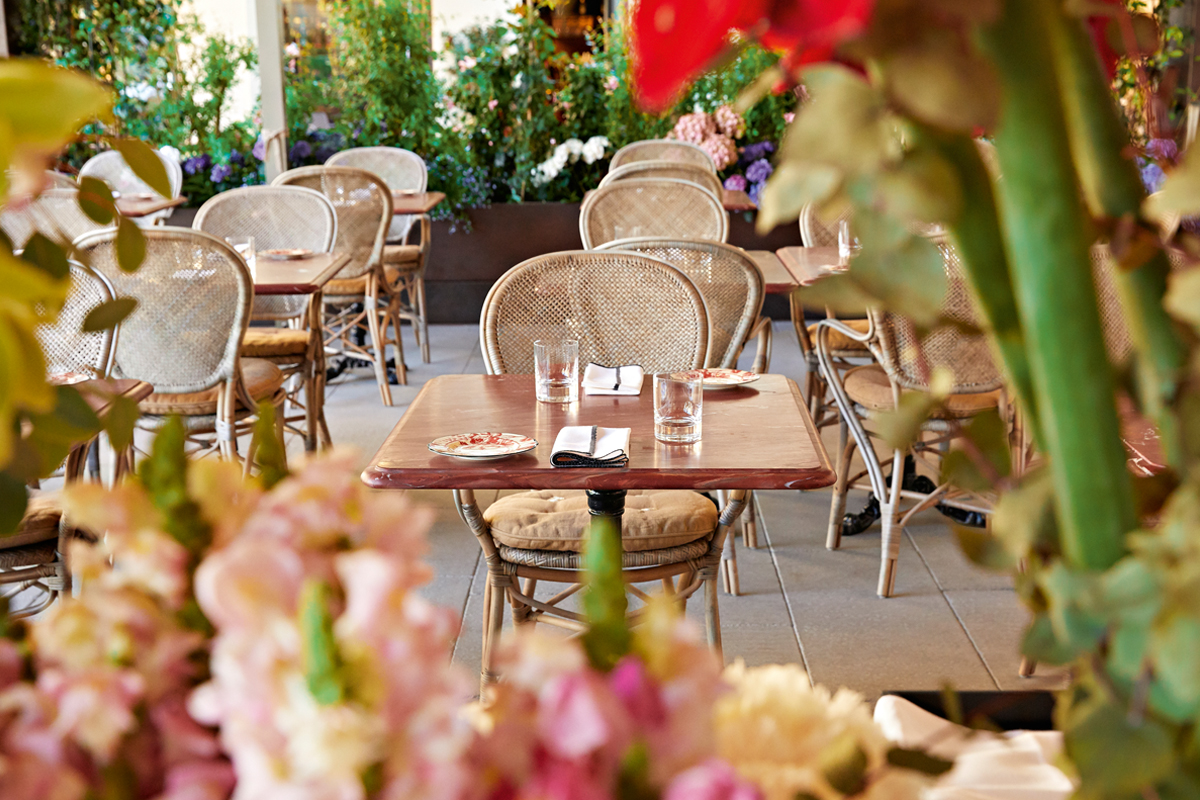Gucci Garden To Unveil New Exhibits In The Gucci Garden Galleria In Florence
Gucci Garden, which is housed in the historic Palazzo della Mercanzia in Florence’s Piazza della Signoria, unveiled new exhibits by artist Livia Carpenzano.
Gucci Garden was conceived by Gucci Creative Director Alessandro Michele and features exhibition spaces curated by critic and curator Maria Luisa Frisa. Continuing her exploration of the House archive, Maria Luisa Frisa now experiments with a new approach to displaying artefacts and documents in the Gucci Garden Galleria, by introducing a series of new exhibits. To reflect the brand’s complex, multidimensional and multi-channel history and activity, these new exhibits literally hijack sections of the galleries to illustrate the ever evolving inclusive imagination of Alessandro Michele, who weaves narratives and mythologies by combining and juxtaposing his personal memories and those of the House. His is a provocative itinerary that manages to hold together the materiality of objects and the immaterial impulses of creative vision.
On level one of the Gucci Garden Galleria is Détournement, where decontextualised elements from the House are placed in a circle; objects torn from their own history. The Gucci alphabet is disassembled and reassembled, while the logo is iridescent and displayed in its multiple formats, to the point where it loses its original features. As related in the press release for the Spring/Summer 2016 Men's Collection, "détournement is configured as an aesthetic practice that revives fragments dispersed within a new, meaningful whole”. Significantly, the exhibit shows how thanks to the visionary inclusiveness of Alessandro Michele, Gucci DNA binds with other narratives. Gucci believes in flexibility and freedom from conventional restrictions, and this allows it to incorporate references to other cultural stories, not as a mere homage, but more as a citation through which the House creates new meanings.
In the room showing Détournement, Japanese artist Yuko Higuchi has created an image that features a large, fantastical, mythical creature and incorporates many of the House motifs, like the green-red-green Web stripe ribbon, Kingsnake, Tiger and interlocking G, as well as flowers and insects that contribute to the sense that this is literally a garden scene within Gucci Garden. Yuko Higuchi says, ‘I drew the beast as if it is offering a flower, in a setting evoking the wonderful flowers and plants of a Gucci Garden. The creature comes from my imagination and I see it as a type of dragon. The image was also inspired by the idea of the Shiranui, the optical phenomenon of supernatural-looking fire that you sometimes get over water, and which I feel brings great joy.’
Leading from the room containing Détournement is another where visitors will find Bagology, an exhibit that takes a dive into the accessory: the bag. Looking at a timeframe from the 1950s to the present, the selected bags from the archive and contemporary collections show how though Gucci has been repeatedly interpreted through the eyes of different Creative Directors, the essence of the House style has remained intact throughout, giving rise to objects so well-known and familiar that they are now referred to simply by their own names: Sylvie, or Jackie, for example. The title of this exhibit is borrowed from the subtitle of the article "Inside Story of a Handbag" by Anita Daniel, published in The New York Times in January 1945. The level closes with Cosmorama, a wall-safe that articulates the theme of the journey. After all, it is a fascination with travel that gave rise to Gucci in the first place, and this is what is expressed in the heart of this room, in which an eclectic inventory of bags, luggage, hat boxes, beauty cases and trunks tells the story of a fashionable “jet set” that, even before the invention of that particular form of air travel, constituted the nucleus of the loyal Gucci clientele.
On level two, the first two rooms host distinct motifs. The first, Ouroboros, echoes the ancient symbol of the snake biting its tail, reactivated in recent Gucci brand narratives. Starting with the plant and animal elements that “snake” through Gucci’s heritage, the exhibit ventures into the mysterious and alchemical aspects of nature and into the symbols of ancient civilisations and esoteric territories. This room hosts pieces such as a golden, armour-like gown, feathered jeans, a long black dress with a serpent slithering down the body, and pieces where the vegetation rooted in the heritage of Gucci is displayed, which brings us up to date with the modern interpretation of the iconic Flora motif. In the second room, Cosmic Colours explores a colour palette (Neptune Green, Sun Glow, Space Blue, Cosmic Red) that runs through the Gucci collections, with certain House artefacts re-emerging from the archive, showing how these are connected with Alessandro Michele’s chromatic research. In the final room, Jardin d’Hiver, is a further deployment of the archive, with the introduction of objects and documents surrounded by the white version of the Gucci Tian wallpaper. Display cases, mimicking a collection of aviaries, create the effect of an eccentric winter garden – a final and total immersion in the prodigious and extraordinary plurality of nature, and an exploration of the relation of this to the House.
The Period Rooms in the Gucci Garden Galleria, which opened a year ago with a tribute to Björk and the House’s collaboration with her, continue to host the exhibition Il Maschile – Androgynous Mind, Eclectic Body (The Male – Androgynous Mind, Eclectic Body (which opened in January). Curated by Maria Luisa Frisa to demonstrate how Gucci has interpreted and defined men’s fashion over the years, the exhibition presents men's style as a territory of possibilities, combining clothes, objects, accessories, images, books, magazines, documents and video, drawing a map that links eccentricity and immediacy, and formality and eroticism.
Murals by the Italian artist MP5, whose incisive black-and-white drawing style is employed to present a critical and politically committed vision of reality, and by the English artist Alex Merry, who designs dreamlike and metaphysical universes characterised by a surprising use of colour, remain installed in the transitional areas of Gucci Garden – the stairwells and stair and elevator landings. MP5’s wall paintings for the first- and second-floor landings of the Gucci Garden Galleria form a seamless narrative about individuality and the depth of physical and emotional exchange, while Alex Merry’s arched windows for the stairwells metaphorically open onto Piazza della Signoria and depict metaphysical landscapes where extraordinary alchemical transformations occur.
The Cinema da Camera is a small cinema auditorium in Gucci Garden dedicated to experimental film productions, which since its opening has hosted the works of artists and collectives such as Luca Trevisani, ZAPRUDER Filmmakersgroup and Magazzini Criminali. Now it welcomes a sound project by the poet, artist and performer John Giorno, produced in 2012 by Recordthings and Zona Archives. John Giorno in Florence, curated by Maurizio Nannucci, is an LP divided into twelve audio tracks recorded between 1983 and 1998, which take the listener on a journey that celebrates the profound relationship between the American artist, an exponent of the ideas of the Beat Generation, and the city of Florence.
Exclusivity is key to the special Gucci Garden store, making it a destination for visitors to Florence. Almost all the products on sale here are created especially for the boutique and are not available anywhere else in the world. New to Gucci Garden is a selection of clothing and other items bearing images by artist Livia Carpenzano. Born in Lugo di Romagna in 1989, Livia Carpenzano is known for her graphic work. For Gucci she has drawn on her exploration of Ovid’s Metamorphoses and her artwork for a project she entitles: Drawing the Metamorphoses, Or, Celebrating the Evil of Ovid. The drawings are idiosyncratic and disconcerting, born of the artist’s response to the classical text: ‘As I read, a snail-shell spiral formed in my brain around the description of the woods and the symbolism of the beasts,’ she explains. ‘Drawing these “little things” was a natural extension of that experience.’ She says her work here ‘depicts the precariousness of malice as it sinks beneath the weight of image after image (and kindness after kindness) in a carefully calibrated layering of the illusory and the real.’
Another new offer is the Gucci Bamboo Bag. This famous design dates from the late 1940s and the decision by craftsmen of the House to use the woody plant for handles because of the post-war shortage of materials. New versions of the Bamboo Bag have been developed for Gucci Garden with exclusive patterns. The Sylvie bag, a design taken from the House archive, with its striking chain-and-buckle closure, is also reimagined for Gucci Garden in velvet in a bright geometric pattern. And then there are special versions of the Dionysus: four models with a distinctive blue rose pattern and one in the flower tapestry design, and a new shape, with the House’s iconic bamboo handle. There is also a sporty range of brightly patterned backpacks that combine practicality and style, as well as a range of portfolios and totes decorated with House motifs in gold leaf, including animals like the Moth, Nocturn Bat and Mystic Cat.
Two new striking designs featuring renaissance-style graphics are also being launched at Gucci Garden. These motifs, in red, green and gold, on an ecru background, are key patterns and they feature on many items at Gucci Garden, including the New Jordaan loafer. This model, launched in the Autumn/Winter 2016 Collection, has a distinctive elongated silhouette and the House’s famous Horsebit hardware and has become one of the label’s most iconic pieces. For Gucci Garden it now comes in a number of specially developed patterns. Another loafer, the backless Princetown, with fur in the interior, is offered in the new pattern.
Many of the shoe styles made specifically for Gucci Garden have an interior embellished with the Garden Floral design as a special feature.
Ready-to-wear for women includes long checked and tartan coats with embroidered velvet flowers, knitted capes, culottes in wool/cotton and printed denim, and full dresses in the romantic dream print. There is a large selection of women’s jackets, from highly patterned long kimono styles in a multitude of floral prints to short kimono shapes. For men there are many exclusives, like kimonos with floral embroidery and elegant, belted dressing gowns with contrast-colour piping. Bright jacquard wool-and-alpaca knitted crew necks and cardigans form a knitted group, while printed sweatshirts and T-shirts feature a new red and green four-leaf clover design created especially for Gucci Garden.
Gucci Garden sells many other accessories including butterfly-shape eyewear and ornamental square silk scarves and patterned square shawls. A selection of idiosyncratic fashion jewelry includes dark-yellow- finish metal brooches and multi-finger rings, ribbon brooches with glass details, earrings with embroidery details and a range of brass pieces (ring, necklace and earrings) displaying the Gucci lion’s head design.
There are also many Gucci Décor pieces that are only on sale here, including a range of upholstered dining chairs that feature padded seats adorned with bees, herons and flowers. Porcelain crockery in a red version of the Herbarium pattern is exclusive to Gucci Garden, as are a wide variety of porcelain candle holders and mugs featuring House designs.
A significant recent addition to the Gucci Garden gift selection is a map of Florence detailing Alessandro Michele’s favourite haunts in the city.
Other special gifts and gadgets are also on sale, including decorative shopper bags, pouches, notebooks, postcards, music boxes, matchboxes and storage boxes– and even a Post-it cube – all decorated in Gucci House style.
A vast selection of publications is available here too, with a focus on niche, specialist printed material. The subject matter is mainly concerned with contemporary art, fashion, design and architecture. Glossy magazines, fanzines, monographic books, book box sets, pamphlets and academic journals are displayed side by side with prestigious limited edition books – often with special cover designs or slipcases – and works featuring photographic prints or artworks numbered and signed by the author.
In keeping with the spirit of creative collaboration that Gucci Garden embraces, its restaurant – the Gucci Osteria da Massimo Bottura – is helmed by internationally renowned chef Massimo Bottura, whose dishes explore the deep roots of the Italian kitchen while making references to history, art and philosophy. His famous three-Michelin star restaurant, Osteria Francescana, located in his hometown of Modena, was named No. 1 on The World’s 50 Best Restaurants List in 2016 and 2018. Together with Karime López, chef de cuisine of the Gucci Osteria, Massimo Bottura has created a menu that is reinvented each season and is inspired by the people they have met – and the experiences they have had – on their travels. The foreign influences are then applied to Italian cuisine. ‘This restaurant is a reminder that Florence has always been a centre of cultural exchange, particularly during the Renaissance,’ says Massimo Bottura. To reinforce this idea, lines of a 15th-century carnival song (canto carnascialesco) by Lorenzo de’ Medici – “Canzona of the seven planets”, or “Canzona de’ sette pianeti” – are written in gold letters around the tops of the walls of the Gucci Osteria da Massimo Bottura.
Opening Hours
Store: 10.00 – 23.30
Gucci Garden Galleria: 10.00 – 23.30 (last entry 22.30)
Gucci Osteria: Lunch 12.30 – 15.00 / last reservation: 15.00
Dinner 19.00 – 22.00 / last reservation: 22.00
Admission
Seven days a week, year-round, with closures planned for 25th December, 1st January and 15th August.
Ticket Price
Eight euros; 50% of each ticket sale will be donated to support restoration projects in the city of Florence. Concessions: entry to the Gucci Garden Galleria is free for students, people aged 65 and over, children under the age of 12, disabled persons, citizens of Florence (Mondays only) and employees of the Kering Group.
